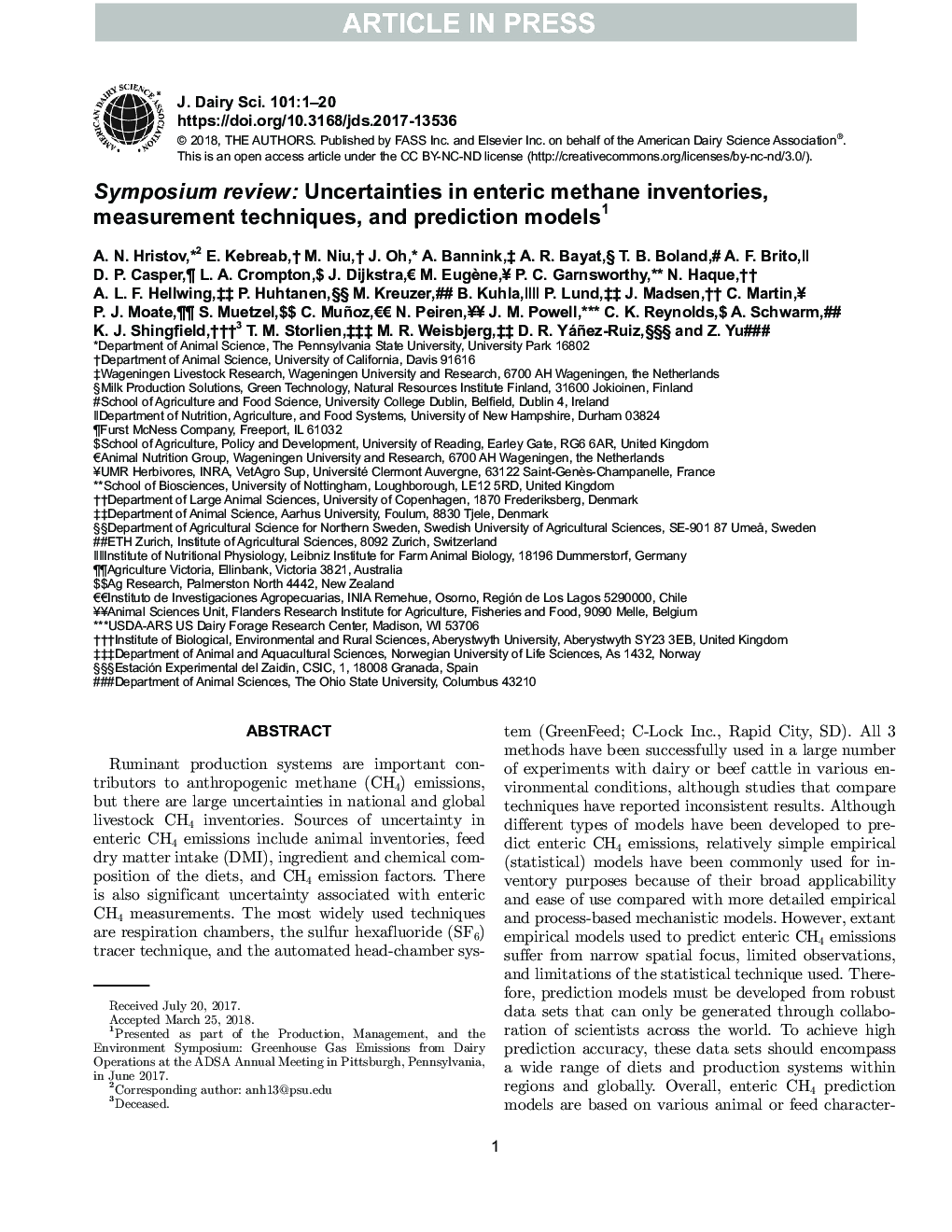| کد مقاله | کد نشریه | سال انتشار | مقاله انگلیسی | نسخه تمام متن |
|---|---|---|---|---|
| 8501139 | 1553838 | 2018 | 20 صفحه PDF | دانلود رایگان |
عنوان انگلیسی مقاله ISI
Symposium review: Uncertainties in enteric methane inventories, measurement techniques, and prediction models
ترجمه فارسی عنوان
بررسی سمپوزیوم: عدم اطمینان موجودی در متان روده، تکنیک های اندازه گیری و مدل های پیش بینی شده
دانلود مقاله + سفارش ترجمه
دانلود مقاله ISI انگلیسی
رایگان برای ایرانیان
کلمات کلیدی
موضوعات مرتبط
علوم زیستی و بیوفناوری
علوم کشاورزی و بیولوژیک
علوم دامی و جانورشناسی
چکیده انگلیسی
Ruminant production systems are important contributors to anthropogenic methane (CH4) emissions, but there are large uncertainties in national and global livestock CH4 inventories. Sources of uncertainty in enteric CH4 emissions include animal inventories, feed dry matter intake (DMI), ingredient and chemical composition of the diets, and CH4 emission factors. There is also significant uncertainty associated with enteric CH4 measurements. The most widely used techniques are respiration chambers, the sulfur hexafluoride (SF6) tracer technique, and the automated head-chamber system (GreenFeed; C-Lock Inc., Rapid City, SD). All 3 methods have been successfully used in a large number of experiments with dairy or beef cattle in various environmental conditions, although studies that compare techniques have reported inconsistent results. Although different types of models have been developed to predict enteric CH4 emissions, relatively simple empirical (statistical) models have been commonly used for inventory purposes because of their broad applicability and ease of use compared with more detailed empirical and process-based mechanistic models. However, extant empirical models used to predict enteric CH4 emissions suffer from narrow spatial focus, limited observations, and limitations of the statistical technique used. Therefore, prediction models must be developed from robust data sets that can only be generated through collaboration of scientists across the world. To achieve high prediction accuracy, these data sets should encompass a wide range of diets and production systems within regions and globally. Overall, enteric CH4 prediction models are based on various animal or feed characteristic inputs but are dominated by DMI in one form or another. As a result, accurate prediction of DMI is essential for accurate prediction of livestock CH4 emissions. Analysis of a large data set of individual dairy cattle data showed that simplified enteric CH4 prediction models based on DMI alone or DMI and limited feed- or animal-related inputs can predict average CH4 emission with a similar accuracy to more complex empirical models. These simplified models can be reliably used for emission inventory purposes.
ناشر
Database: Elsevier - ScienceDirect (ساینس دایرکت)
Journal: Journal of Dairy Science - Volume 101, Issue 7, July 2018, Pages 6655-6674
Journal: Journal of Dairy Science - Volume 101, Issue 7, July 2018, Pages 6655-6674
نویسندگان
A.N. Hristov, E. Kebreab, M. Niu, J. Oh, A. Bannink, A.R. Bayat, T.M. Boland, A.F. Brito, D.P. Casper, L.A. Crompton, J. Dijkstra, M. Eugène, P.C. Garnsworthy, N. Haque, A.L.F. Hellwing, P. Huhtanen, M. Kreuzer, B. Kuhla, Z. Yu,
